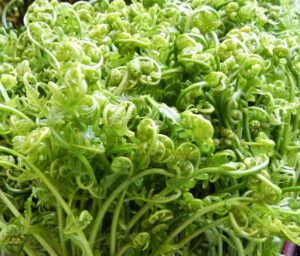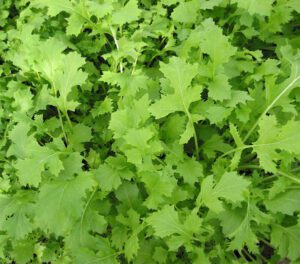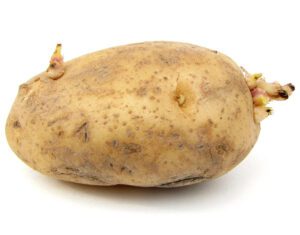Growing beets organically in home garden, and cooking them in your kitchen will create a much pleasuring moment for you.
Beets (Beta vulgaris) are actually a very fast-growing vegetable that can be grown just about anywhere. There are some other names of beets such as beetroot, red beet, golden beet, table beet etc.
The beets are actually known as a root crop. But the most notable feature of growing beets is that ‘all the parts of the beet plant are edible and also tasty’.
Beets are very nutritious and have many benefits for health. And the beets can be prepared in many different delicious ways.
Beets are grown not only for human consumption, but also grown largely for using as livestock feeds.
There are some forage or mangle varieties of beat available which are generally grown for feeding livestock animals in winter.
How to Start Growing Beets in Home Garden
Growing beets organically in home garden is very easy and simple. Beets have many reasons why they deserve a place in your home garden.
However, here we are describing more about the ways of growing beets organically in home garden.
Choose a Beet Variety
There are many different beet varieties available throughout the world. You should choose such a variety which grows well in your area. Also ensure the availability of the variety in your area while choosing.
Some common and mostly grown beat varieties are Cylindra, Chioggia, Albino, Bull’s Blood, Crosby’s Egyptian, Golden, Perfected Detroit, Red Ace, Detroit Dark Red Medium Top, Early Wonder, Touchstone Gold, Ruby Queen etc.
You can also consult with an existing farmer in your area while choosing a beet variety.
Collect/Purchase Seeds
Growing beets is popular throughout the world, and seeds are available in almost everywhere.
You can easily purchase seeds from any of your nearest seed supply stores. There are also some beet seed suppliers with online stores. So, you can also order online.
Time for Growing Beets
Beets are a cool-season vegetable crop, so you can start growing beets during the winter season.
Beets can also survive frost and almost freezing temperatures, so they are great choice for northern areas.
Preparing the Soil
Sandy, loamy and sandy-loamy soils with pH levels between 6 and 7.5 are best for growing beets.
Prepare the soil for growing beets by adding old well-rotted manure or homemade compost. You can also grow beets in clay soil if you can add enough organic materials in the soil.

Add some wood ash (if handy) while preparing the soil for growing beets. Because the wood ash is a rich source of potassium and it enhances root growth.
Planting
Planting beets is very easy. Just ensure the soil reaches around 50° Fahrenheit temperature before planting seeds.
Then plant the seeds about half (1/2) inch deep and 1-2 inch apart in a row. After planting seeds, ensure that the soil remains moist for better germination.
Soaking the seeds in fresh water for 24 hours will results better germination. By keeping the soil constantly moist, you can expect germination within 5-10 days.
Caring for the Beets
You should not follow the ‘plant and forget’ rule for growing beets in your garden.
Beets require additional caring for better growth and good yield. Here we are describing more about the common steps for caring beets.
Feeding/Fertilizing
Additional fertilizing is not required for growing beets, if you have prepared the soil already with above mentioned ways.
However, feeding the beets with organic materials such as ‘compost tea’ will make good results.
Watering
Adequate watering is a must for growing beets, because the beets need to maintain plenty of moisture. So, water the beets well on a regular basis.
Mulching
Mulching helps to retain moisture in the soil. And it also helps to keep your garden free from weeds.
You can spread a layer of leaves, straw or grass clippings around the beet patch.
Mulching is a must for growing beets, because it is essential for uniform root growth.
Controlling Weeds
You can control most of the weeds if you mulch the beet patch. You can pick additional weeds by hand and easily get rid of them.
Thinning
Beet seeds are actually a type of capsules with two or more seeds inside. So thinning is essential (a must), for the beets to grow pump roots.
Relieve early crowding by snipping out the weaker seedlings soon after germination. And then thin the seedlings to 3-4 inches apart after a week.
Pests and Diseases
Diseases are less common for growing beets. Although there are some pests which creates real problem for growing beets. Leaf miners are common pests and they make meandering lines in beet leaves.
The larvae of the small flies and leaf miners feed inside the leaf, so using organic pesticides won’t be able to control them. All you can do is ‘clipping of the affected leaves and destroy them’.
The flea beetles also creates some problems in beets. They make tiny holes in the beet leaves. But in most cases, the healthy beet plants will easily be able to outgrow the damage quickly.
Sometimes the beet plants can suffer from Cercospora leaf spot. It is a fungal disease aggravated by poor plant nutrition and warm and humid weather.
The affected leaves develop small spots and cracked, tan edges. Follow good plant rotation practice for preventing this disease.
Adequate thinning and high level of soil fertility will also be very effective for preventing this disease.
Harvesting
Beets reach maturity and become ready for harvesting within 50-70 days from planting. Although this time can vary depending on the beet variety, and you can actually harvest beets at any time you see fit.
If you prefer larger bulbs, then you should wait longer (remember, they will be tougher and woody if you keep for long time).
These are the common ways for growing beets organically in home garden. Hope you have learned about growing beets from this guide. Good luck!






